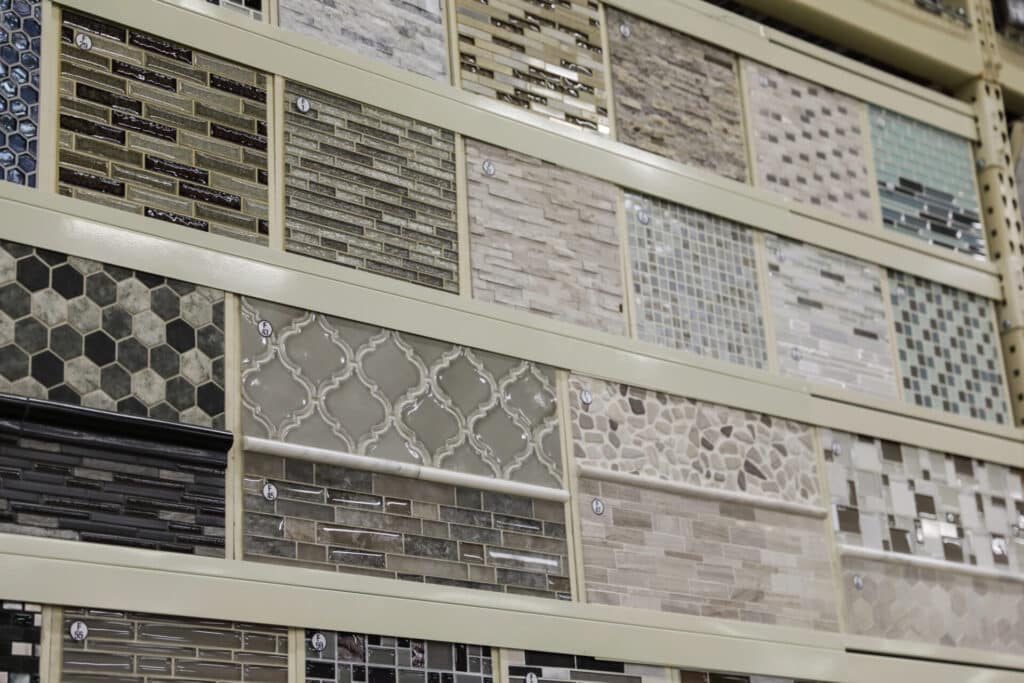
Choosing a kitchen backsplash may seem like a small decision in the grand scheme of remodeling your kitchen, but it can actually have a big impact on the overall look and feel of the space. The backsplash serves as a protective barrier between your walls and the cooking areas, preventing stains and water damage. It also adds a decorative element that can elevate the design of your kitchen.
With so many options available, it can be overwhelming to choose the right backsplash for your kitchen. To help you make an informed decision, here are some things to consider when choosing a kitchen backsplash.
1. Budget:
Before you start shopping for a backsplash, it’s important to establish a budget. The cost of backsplash materials can vary greatly, ranging from inexpensive options like peel-and-stick tiles to more expensive materials like natural stone. Knowing your budget will help narrow down your options and prevent you from overspending.
2. Style:
Consider the overall style and theme of your kitchen when choosing a backsplash. Are you going for a modern, contemporary look or a more traditional, rustic feel? The backsplash should complement the existing design elements in your kitchen, such as the countertops, cabinets, and flooring. For a cohesive look, choose a backsplash that harmonizes with the other materials and finishes in the space.
3. Materials:
Backsplashes come in with various materials, each with its own advantages and disadvantages. Some popular options include ceramic tiles, subway tiles, glass tiles, natural stone, stainless steel, and even wallpaper. Consider the maintenance required for each material, as well as how durable and stain-resistant it is. Also, think about the ease of installation and whether or not you’re comfortable tackling the project yourself or will require professional help.
4. Color and Pattern:
The color and pattern of your backsplash can make a big impact on the overall atmosphere of your kitchen. Light-colored backsplashes can make a small kitchen appear larger and more spacious, while darker colors can add drama and sophistication. Assess the color scheme of the rest of your kitchen and choose a kitchen backsplash that complements or contrasts with it, depending on the desired effect. Patterned backsplashes can add visual interest and become a focal point in the space, but bear in mind that they can also be overwhelming if not balanced with the rest of your kitchen’s design.
5. Maintenance:
The amount of maintenance required for your backsplash is an important factor to consider. Some materials, like glass and stainless steel, are easier to clean and require minimal maintenance. On the other hand, natural stone backsplashes may need regular sealing to prevent staining. Consider your lifestyle and how much time and effort you’re willing to commit to maintaining your backsplash. It’s important to choose a material that fits your needs and preferences.
6. Size and Layout:
Consider the size and layout of your kitchen when choosing a backsplash. If you have a large kitchen with plenty of wall space, you can opt for larger tiles or even customize the design with murals or mosaics. For smaller kitchens, smaller tiles or subway tiles can create the illusion of more space. Take into account the dimensions of your kitchen and the areas that need to be covered to determine the appropriate size and layout for your backsplash.
7. Lighting:
Lighting plays a crucial role in the overall appearance of your backsplash. Take into consideration the natural and artificial lighting in your kitchen when choosing a backsplash. Some materials, like glass and mirrored tiles, can reflect light and make your kitchen appear brighter and more open. Conversely, darker materials can absorb light and create a moody atmosphere. Think about how different lighting conditions will affect the appearance of the backsplash and choose a material and color that complements your kitchen’s lighting scheme.
8. Durability:
As one of the most heavily used areas in the kitchen, the backsplash should be long-lasting and able to withstand daily wear and tear. Consider the materials’ resistance to heat, stains, and water damage. Ceramic tiles and stainless steel are known for their durability, while natural stone may be more prone to scratching and staining. Choose a backsplash material that matches your lifestyle and kitchen habits.
9. Personal Preference:
Ultimately, your personal preference should play a significant role in choosing a kitchen backsplash. This is your kitchen, and you should choose a backsplash that you love and feel comfortable with. Consider your personal style, taste, and the type of atmosphere you want to create in your kitchen. Don’t be afraid to experiment with different materials, colors, and patterns until you find the one that speaks to you.
Choosing a kitchen backsplash is an exciting part of the kitchen remodeling process. Take the time to consider the budget, style, materials, color, maintenance, size and layout, lighting, durability, and personal preferences to make the best decision for your kitchen. By carefully considering these factors, you can choose a backsplash that enhances the overall design of your kitchen and creates a warm and inviting space for cooking and entertaining.
